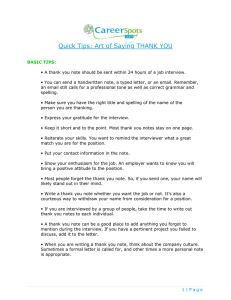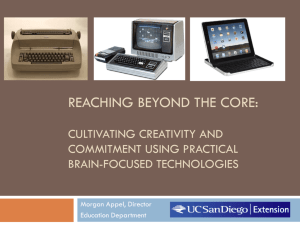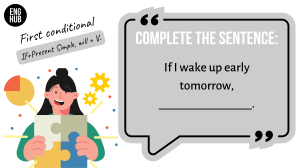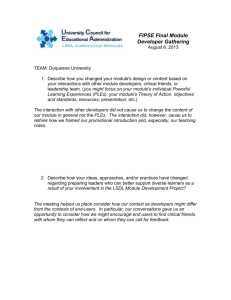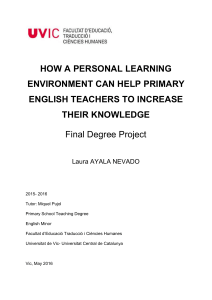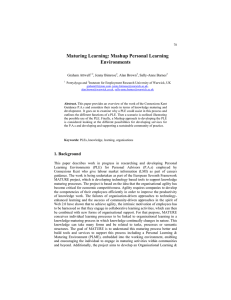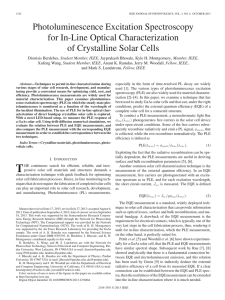BSc in International Marketing
advertisement
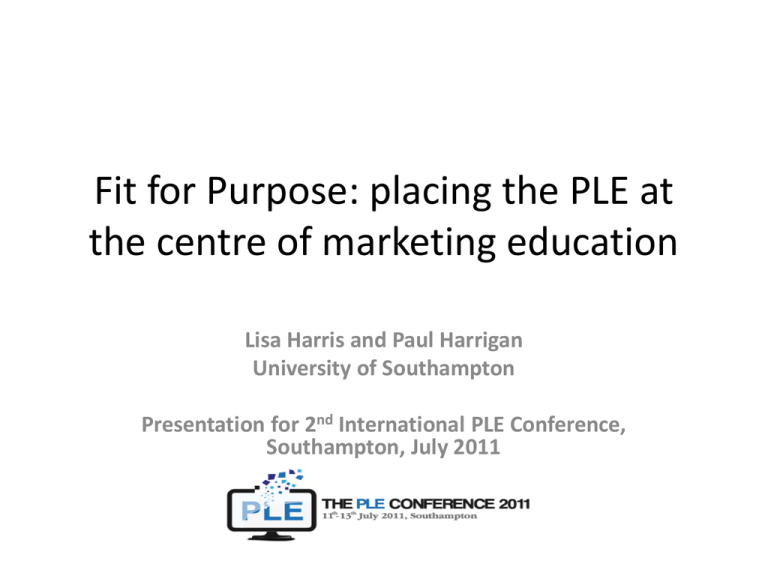
Fit for Purpose: placing the PLE at the centre of marketing education Lisa Harris and Paul Harrigan University of Southampton Presentation for 2nd International PLE Conference, Southampton, July 2011 Author Information Paul Harrigan @drpaulharrigan Lisa Harris @lisaharris • Lecturer in Marketing • • Programme Director for the BSc in International Marketing Teaches Digital Marketing at the University of Southampton • Research on impact of technology on marketing curriculum Programme Director for the MSc in Digital Marketing. • Qualified e-tutor for the University of Liverpool online MBA. • Currently developing workshops encouraging the growth of digital presence for career or business development. • • Current research project investigating use of Web 2.0 (e.g. social networks, blogs, web analytics) technologies on customer relationships in marketing Background • At Southampton our research focuses on: – how developments in technology are driving new marketing theory and practice – how marketing education should respond to these changes • This paper evaluates how marketing education should develop both appropriate curriculum content and the supportive personal learning environments (PLEs) made possible by developments in technology • Slides and full paper can be accessed via my blog The PLE Spectrum • PLEs can be conceptualised in terms of: 1) the technology choices available to individuals to help them manage their learning 2) the features of the study programme which help to formalise this approach 3) the technological infrastructure provided by the university as a whole (ie providing adequate wifi, secure web access etc) 4) the culture changes that are required for staff to operate effectively within this environment Southampton PLE Initiatives • Undergraduate Digital Marketing module – development of online communities by student groups using blogs, Twitter, YouTube and Facebook (from 2008, assessed by oral presentation) • Digital Presence Workshops for staff and students from 2009 • Student blogs to support personal tutor/tutee relationship from 2009 • Integration of PLE into Introduction to Marketing and Digital Marketing Communications modules from Sept 2010 – Blog, Delicious, Netvibes The PLE for marketing students • Assessed blog posts: reflections on the learning process, reinforced with face to face meetings • Continual assessment and feedback throughout module (online and offline) • Students encouraged to find relevant online materials and report back to the group • Live tweeting in class, with remote participants • Encouragement to use online bookmarking and sharing tools Challenges • *Very* variable levels of digital skills amongst students • Variable levels of staff ‘buy in’ • Entrenched expectations of a ‘traditional’ learning experience. They were not used to: – – – – reading or critiquing each others’ work making their work publically available online ‘thinking across’ modules building up assignment work from the start of a module rather than at last minute.com PLE Success stories • Some students volunteered to present their work to the whole group • For examples of students who have really embraced the approach, see Natasha’s blog and Maria’s blog. • Student experiences through the whole programme: student course summary
